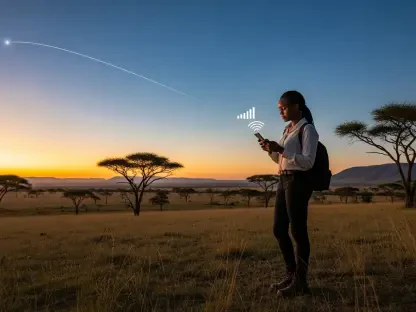For millions who still watch signal bars vanish on country roads, ferries, or borderlands, the prospect of a phone linking straight to space reads less like sci-fi and more like overdue infrastructure, and that is precisely what a new tie-up between Starlink and Proximus Global’s BICS aims to normalize across Europe. The deal places BICS as Starlink’s preferred IPX provider, the behind-the-scenes fabric that roaming has long relied on, now repurposed to ferry traffic between satellites and mobile networks. Kyivstar in Ukraine stands first in line, a telling choice for a market that values resilient coverage. Crucially, the message is not disruption but integration: satellites as a seamless extension of terrestrial grids. That frame matters because it keeps operators in the loop while widening reach, and it steers the conversation away from wholesale replacement toward pragmatic coexistence.
How IPX Turns Space Into A Roaming Partner
BICS’s role centers on IPX interconnection, the neutral exchange that stitches together mobile operators worldwide, now widened to non-terrestrial networks. By using familiar plumbing, the partnership lowers integration friction for carriers and sets up standardized controls for routing, signaling, and policy. Starlink has emphasized harmonized spectrum to maintain service continuity across borders, ensuring smartphones behave consistently as they hop from land to sky and back. Security enters as a parallel pillar: IPX provides established identity, screening, and monitoring layers that European operators already trust. Because D2C service targets standard smartphones, no special handsets or consumer downloads complicate the rollout. That simplicity helps position satellite connectivity as a coverage backstop rather than a premium novelty, particularly valuable for rural residents, travelers, and emergency responders who have little tolerance for blank spots or kludgy add-ons.
From SOS Bars To Broadband Ambition
Early phases of direct-to-cell have leaned on low-bandwidth messaging and basic connectivity, but the road map now points to broadband-grade experiences delivered straight to smartphones. The Starlink-BICS flow is designed to evolve, aligning with 3GPP standards as non-terrestrial networks mature and device radios gain smarter scheduling for space links. For operators, the calculus shifts from capex-heavy towers in low-density areas to an interconnect-driven model that fills gaps cost-effectively. For regulators, cross-border harmonization and lawful intercept remain essential checkpoints, yet IPX governance and auditability reduce ambiguity. The first European activation through Kyivstar offered a proving ground for resilience, and the next steps depended on templated onboarding, transparent SLAs, and shared metrics on latency and handover. If those pieces held together, coverage maps would have expanded, outages would have softened, and the “no service” zone would have edged toward a historical footnote.









